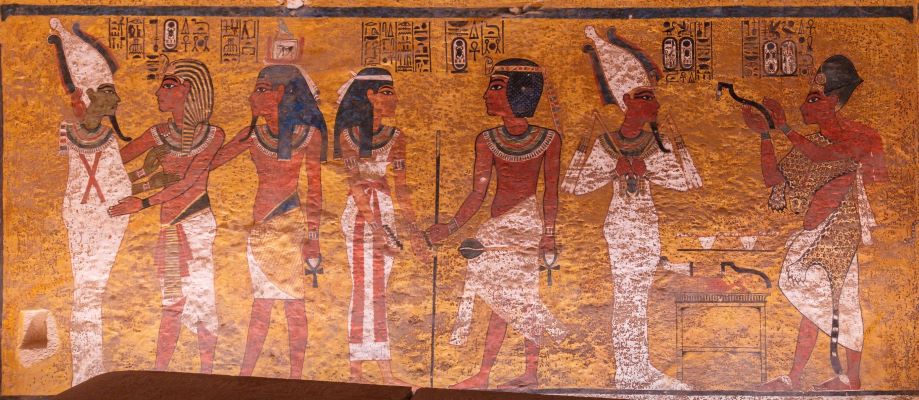
25 november 2023
John Bjarne Grover
Two days ago this reference to the tomb wall of Tutankhamon:

Here is a better resolution photo of the artwork in the tomb at the sarcophagus of Tutankhamun (source in this article).
My poem TEQ #1477 tells of the two water signs in the hands of the female character: Her body is like the space between the two characters #2 and #3 from the left - and then her head extends up into the signs on the wall above - including those two water signs (it is believed that they mean 'n'). "Have a ku!" is then the contents of the box over the head of character #3.
I discovered the cyclic form of Caravaggio's artworks by way of this aspect of 'what is immediately above the head of one of the central characters' - column 2 - see his Crucifixion of St.Andreas = #42 in the second column, #2 in the third. Immediately over the head of the man on the ladder are the hands with the curly signs resembling Tutankhamon's water signs. And down to the left - voila! - is the Catalan constant. Caravaggio's psychology is impressive. This lower lefthand man could here mean 'man-on-wagon' as the 'Inbegriff' of the constraints on the human semiotic constitution.
TEQ #1477
Book 15 poem 23 רבא אמר
Water,
it means that the strange leans after.
Have a ku!
Førde
© John Bjarne Grover
On the web 25 november 2023